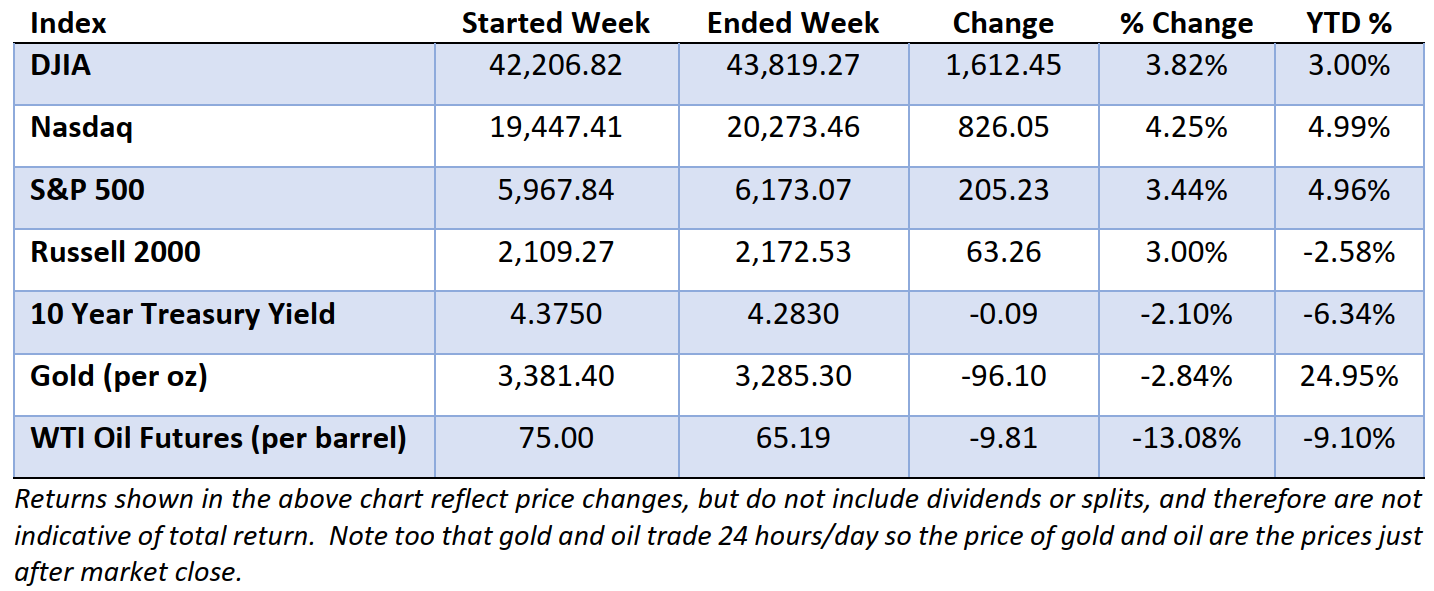June 28, 2025 Market Update
U.S. equities advanced this week, supported by a sharp drop in oil prices and optimism around regulatory progress in the cryptocurrency space (discussed below). Stocks benefited from easing geopolitical tensions and investor sentiment improved across most sectors.
Bond yields moved modestly amid mixed signals from global markets. A steep decline in oil prices—falling more than 7% on Monday alone—helped reinforce expectations that inflationary pressures may continue to moderate, potentially giving the Federal Reserve more flexibility on interest rates later this year. Federal Reserve Chairman Powell continued to signal caution, emphasizing the need for more evidence before declaring victory over inflation.
Looking ahead, the interplay between global risks and domestic policy expectations remains a key source of short-term volatility. While investors are growing more confident in a soft landing for the U.S. economy, uncertainties surrounding interest rate policy, geopolitical developments, and the pace of disinflation continue to threaten both equity and fixed income markets.

One of the biggest crypto stories this week didn’t come from Bitcoin or Ethereum—it came from Circle, the company behind the popular USDC stablecoin. After going public, Circle's stock surged 168% on its first day of trading, driven by investor enthusiasm following the Senate’s mid-June passage of a bill that would establish regulations for stablecoins. While the legislation still needs to clear the House, its advancement is widely seen as a milestone for integrating digital dollars into mainstream finance.
Stablecoins are cryptocurrencies designed to maintain a fixed value—typically pegged to the U.S. dollar. They aim to combine the price stability of traditional currencies with the efficiency of blockchain-based transactions. If widely adopted, stablecoins could change how people and businesses move money, offering faster, cheaper alternatives to credit cards, wires, and even bank accounts.
For investors, this development is worth watching. Regulation could pave the way for stablecoins to become a trusted tool in everyday commerce—and potentially a new pillar of the digital economy. In the years ahead, stablecoins could influence how stocks settle, how broker-dealers manage client cash flows, and how investors fund or transfer assets between accounts. That could make financial markets more efficient—but also introduce new regulatory, technological, and operational complexities.
To learn more about stablecoins and how they function, click here to read a comprehensive guide from Investopedia.
That’s all for now. Have a great weekend and invest wisely my friends.
